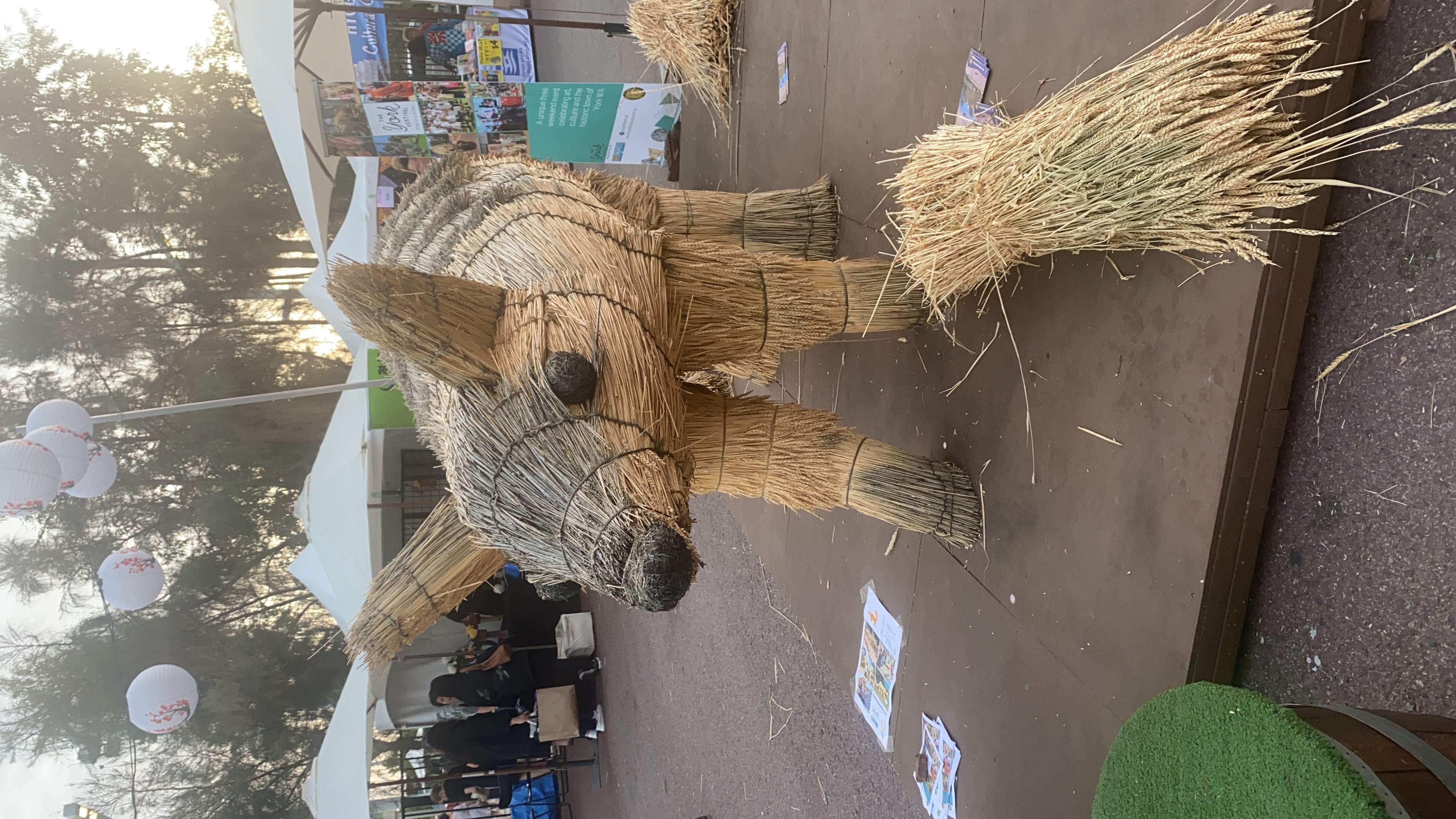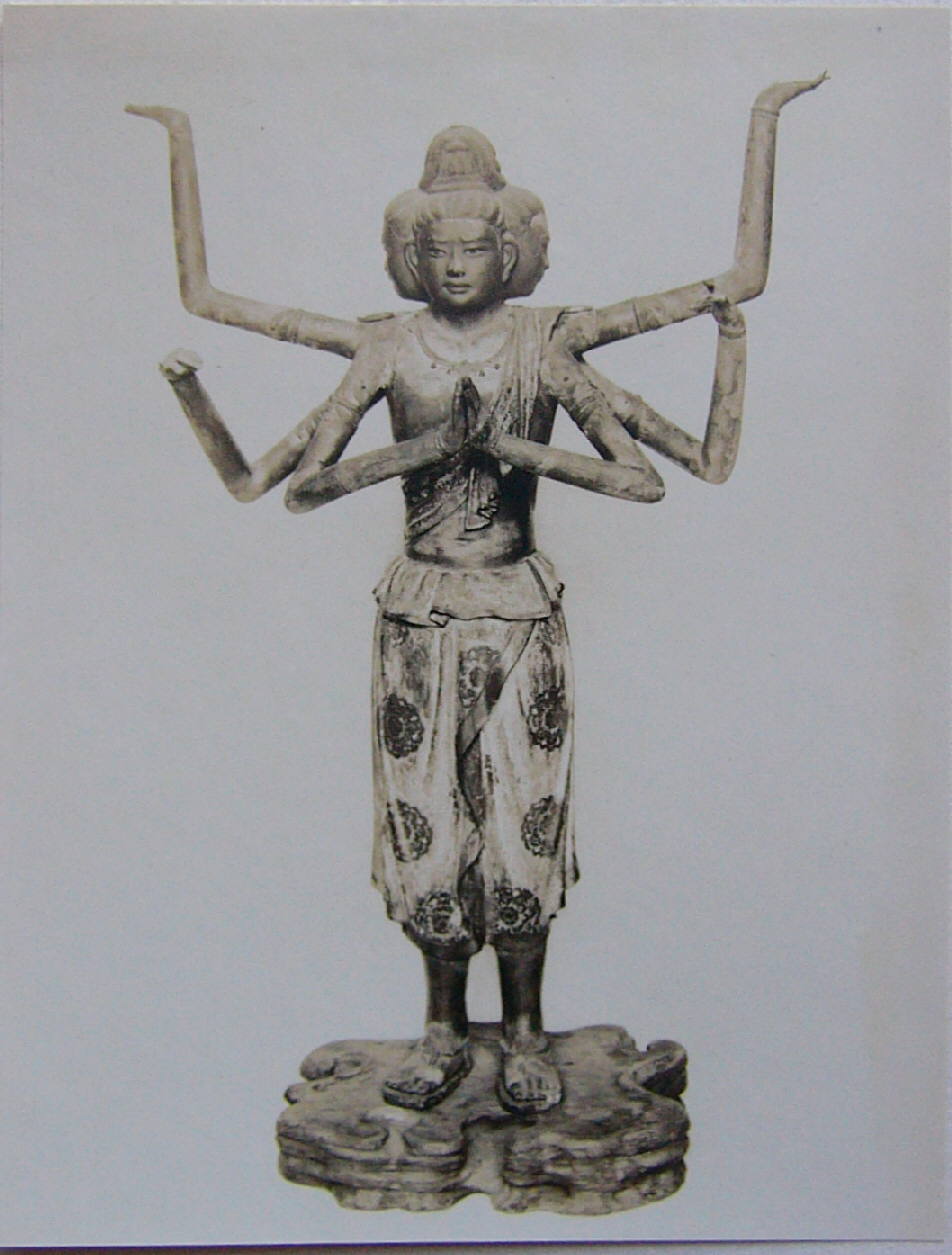|
Wara Art
Wara art is the Japanese art of making large sculptures from rice straw. Wara art in Japan Traditionally, rice straw was used for making tatami mats and other objects. At the beginning of the 21st century, these objects were increasingly replaced by manmade materials, leaving rice farmers with a problem, namely what to do with the rice straw. In 2007, the farming community in Niigata prefecture, Japan, a major rice growing prefecture, asked Professor Shingo Miyajima of the Department of Science and Design at the Musashino University to find a creative solution for the problem. He suggested using the straw to create sculptures of animals supported by a wooden frame. This straw art is called in Japan, wara art, “wara” meaning rice straw. Since 2007, there have been annual festivals of wara art in Niigata prefecture, Nishikan-ku ward. Some of the Wara art statues have been as high as 9 metres tall, but they are usually around 4 metres in height. Wara art in York, Western Aus ... [...More Info...] [...Related Items...] OR: [Wikipedia] [Google] [Baidu] |
Niigata Prefecture
is a Prefectures of Japan, prefecture in the Chūbu region of Honshu of Japan. Niigata Prefecture has a population of 2,227,496 (1 July 2019) and is the List of Japanese prefectures by area, fifth-largest prefecture of Japan by geographic area at . Niigata Prefecture borders Toyama Prefecture and Nagano Prefecture to the southwest, Gunma Prefecture to the south, Fukushima Prefecture to the east, and Yamagata Prefecture to the northeast. Niigata, Niigata, Niigata is the capital and largest city of Niigata Prefecture, with other major cities including Nagaoka, Niigata, Nagaoka, Jōetsu, Niigata, Jōetsu, and Sanjō, Niigata, Sanjō. Niigata Prefecture contains the Niigata Major Metropolitan Area centered on Niigata with a population of 1,395,612, the largest metropolitan area on the Sea of Japan coast and the twelfth-largest in Japan. Niigata Prefecture is part of the historic Hokuriku region and features Sado, Niigata, Sado Island, the sixth largest island of Japan in area follo ... [...More Info...] [...Related Items...] OR: [Wikipedia] [Google] [Baidu] |
Musashino University
is an institution of higher education in Ariake, a district in Kōtō, Tokyo, with a suburban campus in Nishitōkyō. Musashino University is uniquely focused on the ideals associated with the Hongwanji Jodo Shinshu School of Buddhism. History Established in 1924 as by Junjiro Takakusu (1866–1945), an internationally known Buddhist scholar. The institution was to be based on the principles of "Buddhist-based human education". Takakusu was a progressive thinker who stressed women's education and involvement in society. The Japanese government conferred the Order of Culture on him in 1944. Campus The university has two campuses, the main one located in Ariake and a sub-urban campus in Nishitokyo () is a city located in the western portion of Tokyo Metropolis, Japan. , the city had an estimated population of 206,047, and a population density of 13,000 persons per km2. The total area of the city is . Geography Nishitokyo is located at t .... Ariake Campus The Aria ... [...More Info...] [...Related Items...] OR: [Wikipedia] [Google] [Baidu] |
Nishikan-ku
is one of the eight wards of Niigata City, Niigata Prefecture, in the Hokuriku region of Japan. , the ward had an estimated population of 55,963 in 20,369 households and a of 320 persons per km². The total area of the ward was . Geography Nishikan-ku is located in southwestern Niigata City, bordered by the to the west. is on the border ...[...More Info...] [...Related Items...] OR: [Wikipedia] [Google] [Baidu] |
Wara Numbat
Wara may refer to: Places * Wara, Poland, a village in the Subcarpathian Voivodeship, south-eastern Poland * Wara, Gifu, a village in Gifu Prefecture, Japan * Ouara, the former capital of the Ouaddai Empire of Chad Languages * Samwe language, or Wara, one language of Burkina Faso * Paleni language, or Wara, another language of Burkina Faso * Upper Morehead language (Wára), a language of Papua New Guinea Other uses * Wara', piety (in ''Arabic''), a concept central to Abrahamic religions * Wära, a defunct experimental currency of 1920s Germany * Wur, also known as Wara or Wara Mamund, a Pashtun tribe of Afghanistan and Pakistan * Wara art, a Japanese craft of making sculptures of rice straw, ''wara'' meaning rice straw in Japanese See also * * WARA (other) * Ouara (other) * Warah, a tehsil in the Qambar Shahdadkot District Qambar Shahdadkot District ( sd, ضلعو قمبر شهداد ڪوٽ, ur, ) is a district of Sindh, Pakistan, originally named ... [...More Info...] [...Related Items...] OR: [Wikipedia] [Google] [Baidu] |
York, Western Australia
York is the oldest inland town in Western Australia, situated on the Avon River, east of Perth in the Wheatbelt, on Ballardong Nyoongar land,King, A and Parker, E: York, Western Australia's first inland town, Parker Print, 2003 p.3. and is the seat of the Shire of York. The name of the region was suggested by JS Clarkson during an expedition in October 1830 because of its similarity to his own county in England, Yorkshire.John E Deacon: A Survey of the Historical Development of the Avon Valley with Particular Reference to York, Western Australia During the Years 1830-1850, UWA, 1948. After thousands of years of occupation by Ballardong Nyoongar people, the area was first settled by Europeans in 1831, two years after Perth was settled in 1829. A town was established in 1835 with the release of town allotments and the first buildings were erected in 1836. The region was important throughout the 19th century for sheep and grain farming, sandalwood, cattle, goats, pigs and ho ... [...More Info...] [...Related Items...] OR: [Wikipedia] [Google] [Baidu] |
Stook
A stook /stʊk/, also referred to as a shock or stack, is an arrangement of sheaves of cut grain-stalks placed so as to keep the grain-heads off the ground while still in the field and before collection for threshing. Stooked grain sheaves are typically wheat, barley and oats. In the era before combine harvesters and powered grain driers, stooking was necessary to dry the grain for a period of days to weeks before threshing, to achieve a moisture level low enough for storage. In the 21st century, most grain is produced with the mechanized and powered methods, and is therefore not stooked at all. However, stooking remains useful to smallholders who grow their own grain, or at least some of it, as opposed to buying it. Overview The purpose of a stook r 'stooking'is to dry the unthreshed grain while protecting it from vermin until it is brought into long-term storage. The unthreshed grain also cures while in a stook. In England, sheaves were commonly stacked in stooks of twelve ... [...More Info...] [...Related Items...] OR: [Wikipedia] [Google] [Baidu] |
Japanese Sculpture
Sculpture in Japan began with the clay figure. Towards the end of the long Neolithic Jōmon period, some pottery vessels were "flame-rimmed" with extravagant extensions to the rim that can only be called sculptural, and very stylized pottery dogū figures were produced, many with the characteristic "snow-goggle" eyes. During the Kofun period of the 3rd to 6th century CE, haniwa terracotta figures of humans and animals in a simplistic style were erected outside important tombs. The arrival of Buddhism in the 6th century brought with it sophisticated traditions in sculpture, Chinese styles mediated via Korea. The 7th-century Hōryū-ji and its contents have survived more intact than any East Asian Buddhist temple of its date, with works including a ''Shaka Trinity'' of 623 in bronze, showing the historical Buddha flanked by two bodhisattvas and also the Guardian Kings of the Four Directions. Jōchō is said to be one of the greatest Buddhist sculptors not only in the Heian perio ... [...More Info...] [...Related Items...] OR: [Wikipedia] [Google] [Baidu] |




